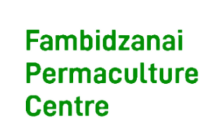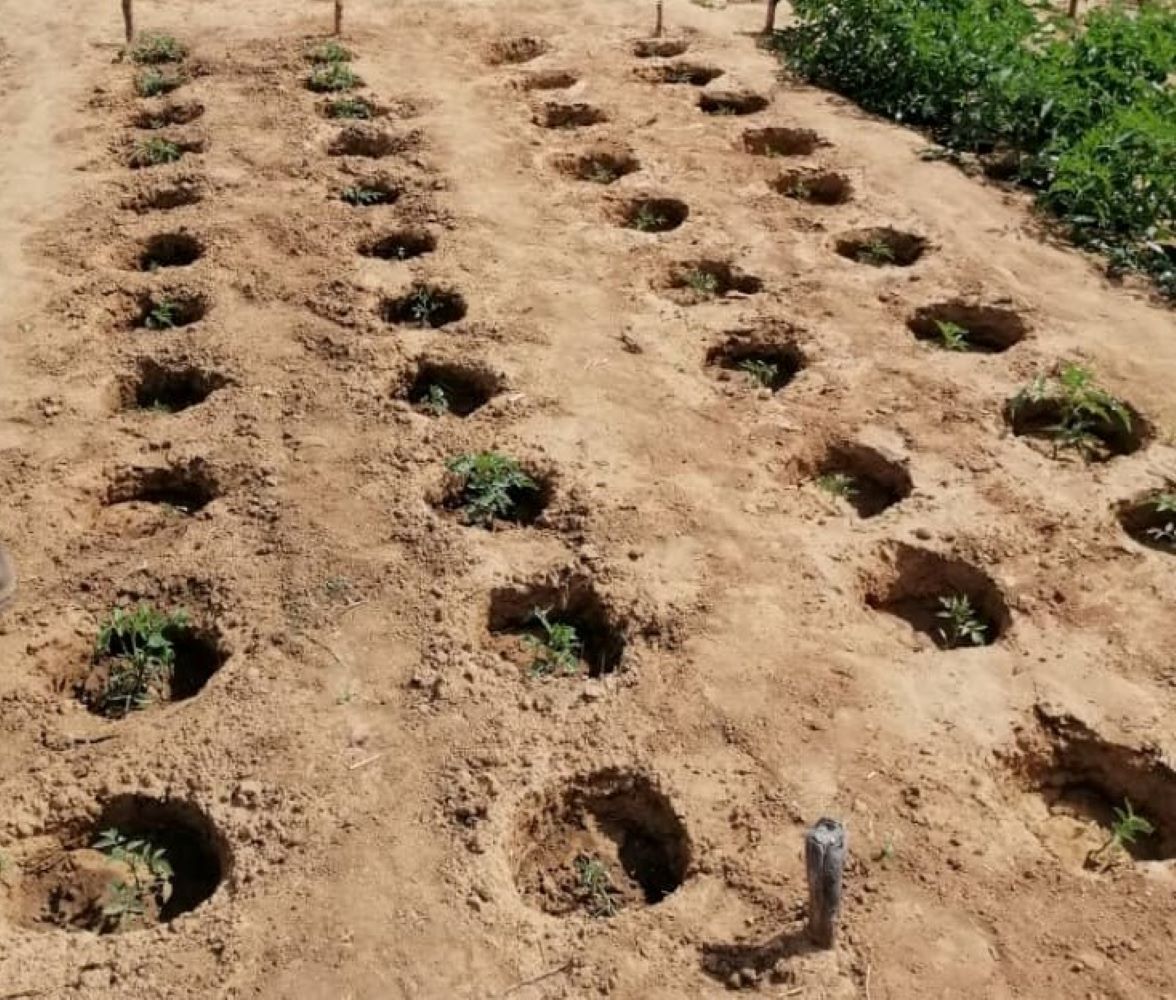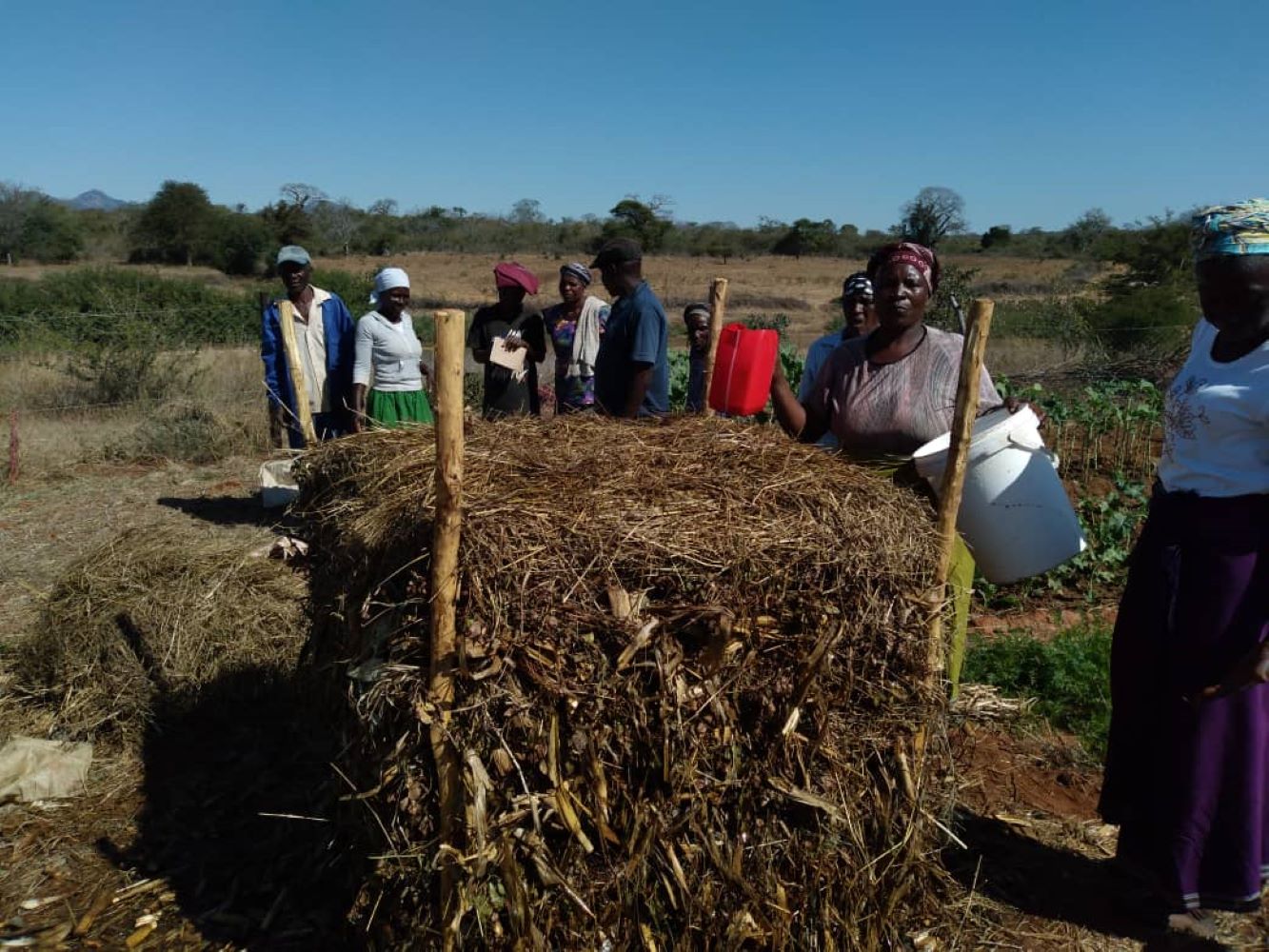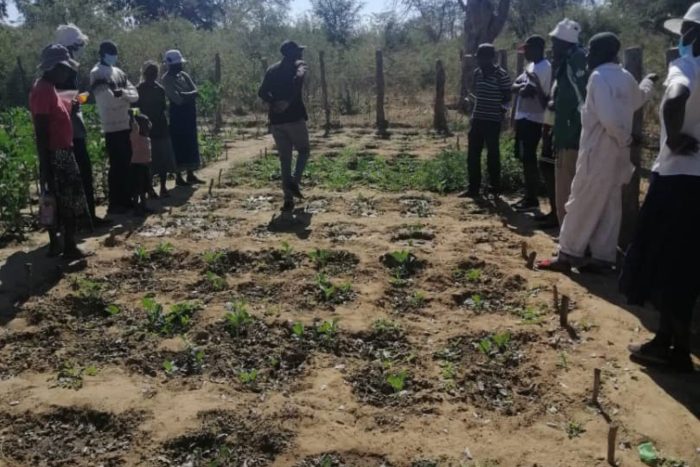SUMMARY
The expected impact of the interventions was to influence an improvement in agricultural productivity and income generation through permaculture practices for over 90% of the participating communities from the two wards of Dema and Madwaleni.
In the period 2011 – 2013 Fambidzanai Permaculture Centre implemented the “Permaculture Consolidation and Market Linkage Programme 2011-2013” in two wards: Dema and Madwaleni in Matobo District.
HEKS EPER provided funding support in the sum of $273 000.00 for the 3-year period.
The project sought to build onto the successes of the previous phases with a view to consolidate the objective of improving the food security and socio-economic status of women and men of Madwaleni and Dema wards through increased sustainable agriculture and marketing of organic produce.
END OF PROJECT EVALUATION SUMMARY REPORT
Beekeeping Enterprise
- There was significant progress in establishing apiaries with 8/9 apiaries being established in the course of the project and good participation by women with 48% of the beneficiaries as women. The average income from the beekeeping is $110 per participating household per year.
- There has been adoption of the beekeeping enterprises by the individual members at household level reflecting the high level of knowledge and confidence by the farmers to stand on their own.
- The bee keeping enterprise is relevant in Matobo because of the income generating potential it provides to households in the semi-arid region where crop farming is not usually successful. It is suitable to the climatic conditions and depends primarily on the natural environment and uses locally available resources.
- However, the results under this component are held back by the low rate of colonisation of beehives at about 30%.
Conservation Farming
- Farmers have widely adopted the CF practices such as the use of the basin technology by about 83% of the farmers and the use of organic manure (93%) while mulching was practiced by nearly half of the adopters and only 9% of them having practiced animal drawn ripping.
- There is over 90% of the farmers that grew maize and about 42.5% who planted sorghum. The promotion of maize under CF has failed several times and rotations have not been emphasized on this programme. The project has an opportunity to contribute to making a difference in promoting CF together with the climate compatible small grains production and marketing in the next phase.
- The training in crop production has led to an improvement in crop yields by the households. Of the farmers that recorded an increase in crop production over the last three years, they attributed the increase to improved farming methods and knowledge gained from the trainings received.
- Conservation farming (CF) is an appropriate and relevant intervention in both wards of Matobo district. Conservation farming addresses the problem of low and erratic rainfall through the use of technologies that reduce water losses, increase infiltration and low soil nutrient status.
Nutrition Gardens
- There are 17 out of 20 targeted gardens that have been established, meaning an 85% achievement of results over the three years. Of these 10 are producing vegetables with surplus for sale to the market for income generation, while the other 7 gardens are only producing for domestic consumption.
- The sizes of the gardens are too small at 0.165 hectares on average giving a total combined size of 2.81Ha. This means the efforts are spread too thinly on the ground reducing the efficiency and effectiveness of resources used.
- The gardens have contributed significantly to household food consumption by providing food directly for household consumption, dietary diversity and the cash income. The average income from all gardening activities per household in a year is about $130 per household.
- The positive environmental and health impact has been through replacement of traditional chemicals and fertilisers inputs with organic inputs by more than 80% of the farmers.
- The use of tree branches for some gardens reduces the environmental sustainability of the current interventions since this promotes deforestation as they get renewed annually.
- Although gardens have contributed directly to food security at household level, the lack of availability of permanent water sources limits the effectiveness of investment in gardens where the farmers cannot be guaranteed all year production.
Goats Pass on Enterprise
- The goats pass on enterprise has steadily progressed since 2008 but has had some mixed results. The low rate of pass on of goats and the high kid mortality rate have dented the attainment of results under this component.
- About 55% of the goats pass on beneficiaries had between one to four goats each while about 8% had between 5-8 goats and an equal proportion with greater or equal to 9 goats. This only shows great potential that small livestock have due to their high rate of multiplication under good management but not fully realised under this programme.
- The conceptualisation and design of the project component was over ambitious as it would be very difficult to achieve the high pass on rate anticipated in the three years initially designed for the project.
- The project design as it stands deviates from the current national guidelines in terms of minimum support amount expected per beneficiary. The amount of support per farmer is expected to be $200 in one year, and that allows for impact to be realised within 2-3 years of project life.
- The project is being implemented in low potential areas where livestock production is an important livelihood option. The distribution of small livestock was powerful as a tool for the empowerment of women.
- The impact of the goat project has been in the areas of improved access to milk and meat for consumption, manure for gardens, and owning the goats themselves as a status symbol. The small livestock contributed to household income for females headed households in more or less the same magnitude as their male headed counterparts as compared to the huge disparity between male and female headed households on off-farm income opportunities.
- The project led to increasing ownership of livestock by over 35% of the households.
Pathekani Resource Centre
- The completion of the construction has taken a longer time than anticipated. The achievement of results is being negatively affected by the slow progress in construction of the centre which has taken more than 5 years to complete. However there was an indication that the materials for completing the centre would be procured in the last quarter of the third year.
- Training of the executive committee in management and leadership is also now a top priority given that it was not delivered concurrently with the construction process.
- The impact of the resource centre is yet to be felt because it is still under construction. However, there are now a few projects like the broiler chicken project which is just beginning, hiring out of facilities as offices as well as value addition and processing of products such as peanut butter and jams and the nutrition gardening activities being implemented at the resource centre. However, the results are yet to be felt at household and community level.
Overall Impact of Enterprises
- Non-farm income is the most important source of income for the district with the benefits greater for male headed households than female headed households. On average a household’s income based on the sample is about $800 per year and the highest contributor is non-farm income. Small livestock follows the no-farm income source as the second most important by contribution and this is also what is making a difference to the female headed households together with gardening.
- The project is making a significant difference by supporting interventions that are important income sources of livelihoods for female headed households. The major source of increases in income over the last three years has been mainly the gardens for over 20% of the respondents and diversification and adoption of drought tolerant crops, while off farm income sources also led to increases in income.
- The major changes recorded at household level over the three year project period have been recorded in changing income levels (51%), improved diet (48%) and improved food security (45%). Other changes that have occurred are the improvement in ability to pay school fees, increased livestock ownership and improved shelter.
- The project has raised the level of awareness on GBV among the people and on HIV, leading to some of them taking appropriate action such as voluntary counselling and testing for HIV and encouraging others to do the same.





